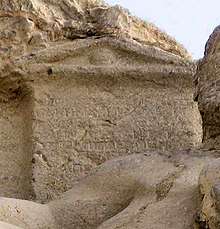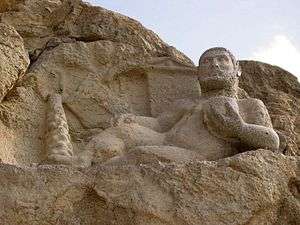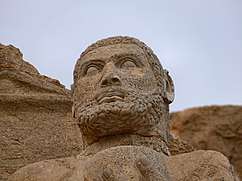Statue of Hercules in Behistun
Statue of Hercules (Persian: تندیس هرکول) is located in Mount Behistun, Iran. It was discovered around 1957. The statue was sculpted in 153 BCE for a governor of the Seleucid Empire or the Parthian Empire. Hercules is lying on a 2 m long platform and holds a bowl in his left hand. He has put his right hand on his foot. The statue is 1.47 m long and is attached to the mountain. The head of the statue was stolen twice, but discovered again in 1996. However, the current head is a double and the actual head is in Cultural Heritage, Handcrafts and Tourism Organization. At the time it was discovered, he had a penis, but after the Islamic Revolution (1979) it was broken down by locals.
| Translation | Inscription (original Greek script) | Original inscription |
|---|---|---|
|
|
 Herakles inscription at Behistun |

